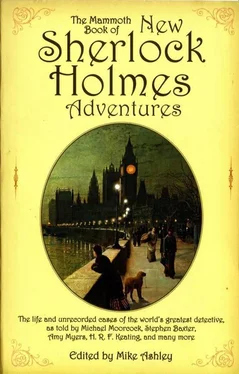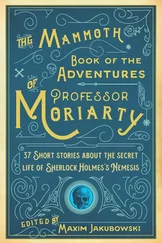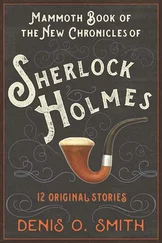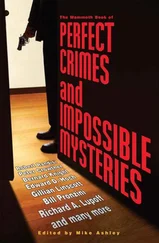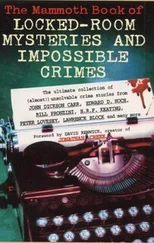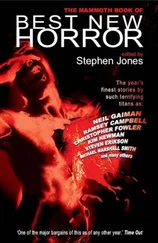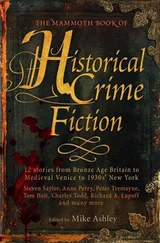Mike Ashley - The Mammoth Book of New Sherlock Holmes Adventures
Здесь есть возможность читать онлайн «Mike Ashley - The Mammoth Book of New Sherlock Holmes Adventures» весь текст электронной книги совершенно бесплатно (целиком полную версию без сокращений). В некоторых случаях можно слушать аудио, скачать через торрент в формате fb2 и присутствует краткое содержание. Жанр: Детектив, на английском языке. Описание произведения, (предисловие) а так же отзывы посетителей доступны на портале библиотеки ЛибКат.
- Название:The Mammoth Book of New Sherlock Holmes Adventures
- Автор:
- Жанр:
- Год:неизвестен
- ISBN:нет данных
- Рейтинг книги:5 / 5. Голосов: 1
-
Избранное:Добавить в избранное
- Отзывы:
-
Ваша оценка:
- 100
- 1
- 2
- 3
- 4
- 5
The Mammoth Book of New Sherlock Holmes Adventures: краткое содержание, описание и аннотация
Предлагаем к чтению аннотацию, описание, краткое содержание или предисловие (зависит от того, что написал сам автор книги «The Mammoth Book of New Sherlock Holmes Adventures»). Если вы не нашли необходимую информацию о книге — напишите в комментариях, мы постараемся отыскать её.
Marianne is an important fictional formulation of Sand's thinking on the role of women and the nature of democracy. This edition includes a long biographical preface which quotes extensively from her correspondences.
The Mammoth Book of New Sherlock Holmes Adventures — читать онлайн бесплатно полную книгу (весь текст) целиком
Ниже представлен текст книги, разбитый по страницам. Система сохранения места последней прочитанной страницы, позволяет с удобством читать онлайн бесплатно книгу «The Mammoth Book of New Sherlock Holmes Adventures», без необходимости каждый раз заново искать на чём Вы остановились. Поставьте закладку, и сможете в любой момент перейти на страницу, на которой закончили чтение.
Интервал:
Закладка:

Mike Ashley, Derek Wilson, Peter Tremayne, Claire Griffen, Edward D. Hoch, David Stuart Davies, Barbara Roden, John Gregory Betancourt, Denis 0. Smith, Guy N. Smith, Eric Brown, Simon Clark, Michael Moorcock, Barrie Roberts, Robert Weinberg, Lois H. Gresh, Stephen Baxter, Peter Crowther, Basil Copper, H. R. F. Keating, David Langford, Roger Johnson, Amy Myers, Martin Edwards, Michael Doyle, Zakaria Erzinçlioglu, F. Gwynplaine MacIntyre, L. B. Greenwood
The Mammoth Book of New Sherlock Holmes Adventures
© 1997
Foreword by Richard Lancelyn Green
One of the most famous opening paragraphs in a Sherlock Holmes story is that found in "Thor Bridge" (which was first published in the 1920s). Dr Watson says: "Somewhere in the vaults of the bank of Cox & Co., at Charing Cross, there is a travel-worn and battered tin dispatch-box with my name, John H. Watson, M.D., Late Indian Army, painted upon the lid. It is crammed with papers, nearly all of which are records of cases to illustrate the curious problems which Mr Sherlock Holmes had at various times to examine." Readers had already been offered tantalizing details of many unrecorded cases in preceding stories, but this confirmed that he had a "long row of year-books which fill a shelf, and there are the dispatch cases filled with documents". He rightly called it "a perfect quarry for the student, not only of crime, but of the social and official scandals of the late Victorian era". It is into these that the authors represented in the present volume have dipped.
The influence of Sherlock Holmes made itself felt within months of the publication of the first short stories in the Strand Magazine. There was plagiarism which achieved its apogee with Sexton Blake who had rooms in Baker Street, and there were rivals who knew they could succeed only by being different. The "Golden Age" of detective fiction was littered with a strange array of private inquiry agents who were fat, blind, Belgian or of the opposite sex. Yet for all their attempts at being different, they never entirely escaped the shadow of Sherlock Holmes. As Scotland Yard had discovered, his longest shots invariably hit their mark, and even when he was outwitted, as he was by Irene Adler, his reputation was enhanced.
It is the art of a great writer to leave the reader anxious for more, and Dr Watson was such a writer. He often erred on the side of discretion, and he intrigued the reader because of his less than perfect grasp of detail. Where his knowledge failed he resorted to imagination and was not unduly concerned when this led to contradictions and inconsistencies within the text. He introduced colour and variety and irrelevance, which added to the myth and gave the reader a picture which was sharp in its essentials, but blurred at the edges.
No reader has ever put down the stories believing that Watson had said the last word on the subject. For some there was an irresistible urge to parody the style and to play with the name of Sherlock Holmes (which lends itself well to mutations such as Shylock Bones, Sherluck Gnomes, Picklock Holes, or Sheerlecoq Omes).The parodies made fun of the contrasting characteristics of Holmes and Watson, between the infallible brain which could distinguish 144 types of cigarette ash or recognize clay and earth from the counties of England (something still denied to the most sophisticated computers of the late twentieth century) and the obtuseness of the all-admiring friend.
The greatest scope for other writers lay in the unrecorded, unfathomed and unfinished cases. When Watson made it known that Holmes had survived the struggle at the Reichenbach Falls, there were demands that he should furnish the public with details of the cases which he had already mentioned, and he proceeded to do so with "The Second Stain" (to which he had referred on two occasions). Even then there was an alternative literature provided by others, including major writers such as Bret Harte, and Mark Twain (who introduced Holmes into his late novel, A Double-Barrelled Detective Story).
The early apocryphal works did not profess to be part of the original "canon", for the concept only developed after Ronald Knox had elevated the study of Sherlock Holmes to new and rarefied heights in 1911 with his famous satirical essay, "Studies in the Literature of Sherlock Holmes". This gave impetus to the serious study of the stories and raised the possibility that there was not one but two authors (as had been suggested in the writing of the Odyssey) or that Watson had described the early cases as they happened, but had invented the later ones to satisfy public demand. The new scholarship opened the
way for others to take up their pens to continue the saga, while remaining faithful to their subject as had the story-tellers of old who created heroic deeds for Alexander the Great of which historians were previously unaware.
The apocryphal Sherlock Holmes story need not be a great detective story, but it has to be a convincing story of the great detective. The character is more important than the case. It is his method which appeals to the reader. It is the special relationship with Dr Watson, who holds up a mirror to nature and occasionally distorts the image to add glamour to the reflection. The additional stories should conform to the formula and yet should add variety. The purist might prefer the seemingly insignificant trifle that turns out to be important, and the humble and eccentric client often makes a better entrance at Baker Street than the representatives of the reigning houses of Europe or the emissaries of the Pope. The introduction of historical figures such as Oscar Wilde or Jack the Ripper is not always advisable as it could be said that they add an element of fiction to the self-contained world of Sherlock Holmes, and characters whose exploits have been documented by others sometimes have difficulty crossing the threshold at Baker Street. Watson could describe a case in which Sherlock Holmes outwitted Raffles, but it would not be the Raffles who is known to us through the writings of his friend, Bunny Manders. There again, there is no reason why Holmes's grandson should not ape his grandfather and form a working partnership with Dr Watson's granddaughter, but it is Dr Watson, and his work, who will always be most in demand. Whatever other cases remain in the battered dispatch box, readers are most anxious to have details of the cases which are known to them by name and which were solved by Sherlock Holmes.
This volume is exactly what is required. It contains an impressive array of cases which Watson mentioned and it has a scholarly status as it is arranged in chronological order with a connecting narrative which provides a biographical background. It is entertaining and informative, and is remarkable for the many distinguished writers who are among the contributors. It is a book which can be recommended and is in every sense a magnum opus.
Acknowledgments
Grateful acknowledgment is given to Dame Jean Conan Doyle for permission to use the Sherlock Holmes characters created by the late Sir Arthur Conan Doyle. My thanks also to Roger Johnson, Jon Lellenberg, Christopher Roden and R. Dixon Smith for their help and guidance during the preparation of this book, and to Richard Lancelyn Green for kindly providing the foreword. All of the stories in this volume are in copyright. The following acknowledgments are granted to the authors and their agents for permission to use their work.
"The Adventure of the Inertial Adjustor" © 1997 by Stephen Baxter. First publication, original to this anthology. Printed by permission of the author.
Читать дальшеИнтервал:
Закладка:
Похожие книги на «The Mammoth Book of New Sherlock Holmes Adventures»
Представляем Вашему вниманию похожие книги на «The Mammoth Book of New Sherlock Holmes Adventures» списком для выбора. Мы отобрали схожую по названию и смыслу литературу в надежде предоставить читателям больше вариантов отыскать новые, интересные, ещё непрочитанные произведения.
Обсуждение, отзывы о книге «The Mammoth Book of New Sherlock Holmes Adventures» и просто собственные мнения читателей. Оставьте ваши комментарии, напишите, что Вы думаете о произведении, его смысле или главных героях. Укажите что конкретно понравилось, а что нет, и почему Вы так считаете.
